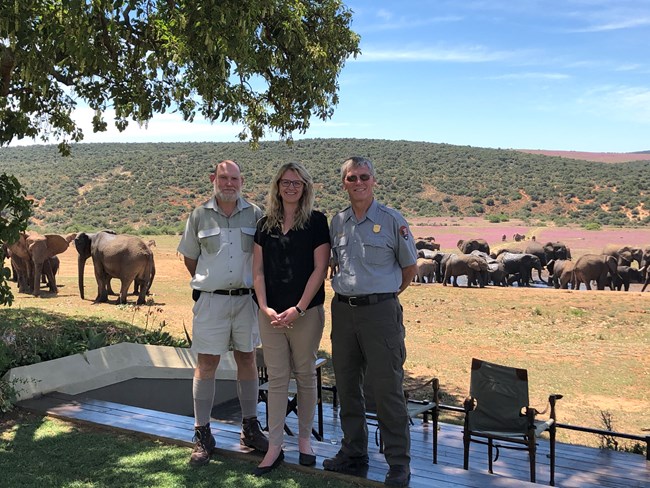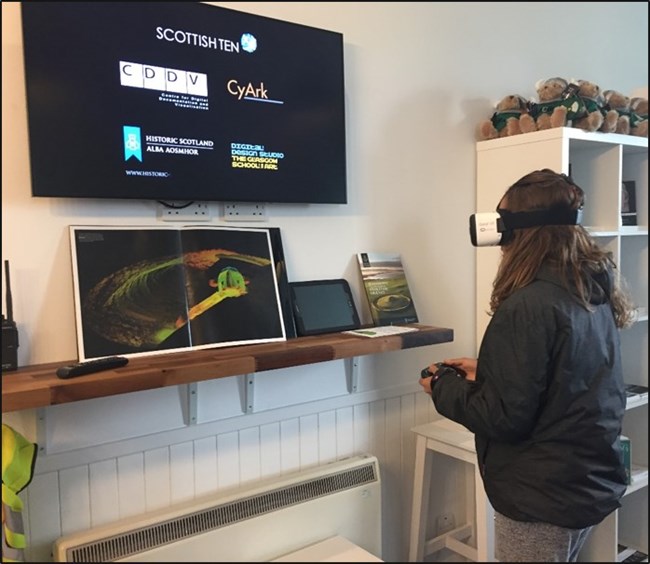"All the world is a laboratory to the inquiring mind." –Martin Fisher
Since 2017 a private donor has provided funding to the National Park Service so that three or four superintendents or deputy superintendents each year have an opportunity to travel abroad to learn from foreign park counterparts.
The premise is simple. We believe there is a lot that our managers can learn from others who work in foreign protected areas.
For the selection process, those that apply need to list three or four issues that they are facing in their park and then we work to find a park overseas that may be dealing with similar issues. Hopefully, during the visit, the superintendent can share his/her successes but also learn how the hosting park has dealt with the same problems.
Past superintendents have asked to learn how other international parks deal with too many tourists (carrying capacity), poaching issues, working with neighboring land-owners, combating wildlife diseases, modernization of visual park interpretation methods and others.
These two short examples showcase past experiences of superintendents who have participated in the program.

Wikipedia Image: Burtonpe and Nikater.
Pacific Rim National Park Preserve - visited by Lee Taylor, Acting Superintendent, Olympic National Park. September 3 - 9, 2017
Spanning 525 square kilometers along the rugged outer coast of British Columbia’s Vancouver Island, Pacific Rim’s three geographically distinct units protect and present significant examples of Canada’s lush coastal temperate rainforest and diverse marine environments. The park is found within the traditional territories of nine Nuu-Chah-nulth First Nations.
Similarly, Olympic National Park is a large wilderness featuring temperate rain forest and more than 70 miles of unspoiled beaches. The Olympic Peninsula is home to eight Indian tribes with close connections to the park.
Visit objectives:
- Develop an understanding how the Parks Canada collaborates with First Nations on resource preservation, telling their stories, decision making, commercial opportunities, etc.
- Develop an understanding of how the park funds infrastructure projects, completes environmental review, and engages the public in planning.
- Develop an understanding of how the park manages interactions between humans and wildlife to ensure visitor safety and preserve natural wildlife behavior.
Conclusion
"The time spent at Pacific Rim National Park Reserve was informative and inspiring. I could see many aspects of park operations which mirrored those at Olympic, as well as illuminating differences—especially in the realm of First Nation relationships—that provoked ideas about how to approach things in new ways."

South African National Parks image.
Addo Elephant National Park - visited by Dan Foster, Superintendent, Lake Roosevelt NRA. October 25 - November 7, 2019
Addo Elephant National Park (AENP) was initially proclaimed in 1931. The park was proclaimed to protect 11 elephants remaining in the area, hunters having decimated the populations of elephants and other wildlife beginning in the 1700s. The park is situated in the Eastern Cape Province, with the administrative office of the park about 47 miles north of Port Elizabeth. The park stretches from the semiarid plains around Darlington Dam, south and east over the Zuurberg Mountain range and into the Sundays River Valley, south to the Sundays River mouth and east along the Algoa Bay.In 1941 the Grand Coulee Dam was built on the Columbia River as part of the Columbia River Basin project, creating a 130-mile long lake. Named for President Franklin D. Roosevelt, Lake Roosevelt National Recreation Area provides opportunities for boating, fishing, swimming, camping, canoeing, hunting and visiting historic Fort Spokane and St. Paul's Mission.
Objectives:
1. Indigenous peoples. Who are the indigenous peoples of AENP area and to what degree are they involved in the management and/or traditional utilization of the resources of the park.
2. Wildlife diseases. While LARO has a variety of wildlife, one of the most important management implications concerns transmission of new diseases to the local human populations.
3. General management practices. What are the key practices enabling parks to fill established purpose and mandates.
Conclusion:
"One of the most fascinating aspects of the trip was how similar the management issues are between the three parks. Only the scale and location seem to change. Also, the history of the areas is so closely aligned with colonization, oppression of indigenous people, protected area management, and challenges placed thereon from society.
It was a privilege to work with Addo Elephant NP Rangers (who perform police, education, and maintenance work) to repair a broken water pipe to one of the watering locations for wildlife and also repair electrical fencing that was broken during the winter months. It was nice to be trusted enough to work alongside those hard working, dedicated people.
Finally, I was able to meet with People and Conservation Department and Mazwe Lama, Mayibuye Ndlovu Development Trust: This was an informative meeting helping me understand AENP interaction with local communities and how the park works with the Trust to improve local conditions. Meeting with Charl Bezedenhout, Biodiversity Social Project (BSP): The BSP is the SANParks science arm. We discussed science actions such as ecology, vegetation management, wildlife population, exotic species management, and fire as a management tool.
This was the trip of a lifetime. Being able to work and associate so closely with park staff, concessions, and stakeholders was a unique privilege. Especially valuable was the opportunity to interact with community members and understand their perspectives on protected areas."

NPS Image.
Interpretive Media at Historic Sites, Scotland - visited by Amy Bracewell, Superintendent, Saratoga NHP, August 19 - 27, 2017
"Through the National Park Service’s (NPS) “Learning from Our Colleagues Abroad” initiative, I had the honor of traveling to the United Kingdom to learn from our counterparts at Historic Environment Scotland (HES). With their investment in digital preservation and interpretive media, HES stands out as a forward thinking organization that is experimenting with innovation and new technology. I focused my visit on their use of technology to help bring the past to life. How do their historic sites effective interpret large landscapes when there is no longer visible evidence of history? What are new ways that international parks are helping visitors visualize the past and engage with the resources?
"During my week visit, I witnessed a wide variety of visitor experiences and uses of digital media. I thoroughly enjoyed talking with field staff at the sites who were honest and thoughtful with their opinions on the media. Some had great experiences with robust and effective technological exhibits. Some would do things differently if they had the chance. Through all of successes and setbacks with digital interpretation, I felt a large theme of
openness to experimentation. Their historic sites embrace new ideas, innovative approaches, and are trying out a variety of media platforms.
"This incredible opportunity through the “Learning from our Colleagues Abroad” initiative gave me renewed inspiration to experiment with technology and continue to champion relevant and fresh interpretive experiences for our visitors. I am grateful for the opportunity to re-connect with my colleagues at Historic Environment Scotland. They are truly leading the world in prioritizing digital documentation and preservation.
"It is inspiring to see the possibilities around the world and to begin thinking of collaborative efforts so we can continue to learn and adapt international innovation to our sites here at home."
Last updated: March 5, 2020
